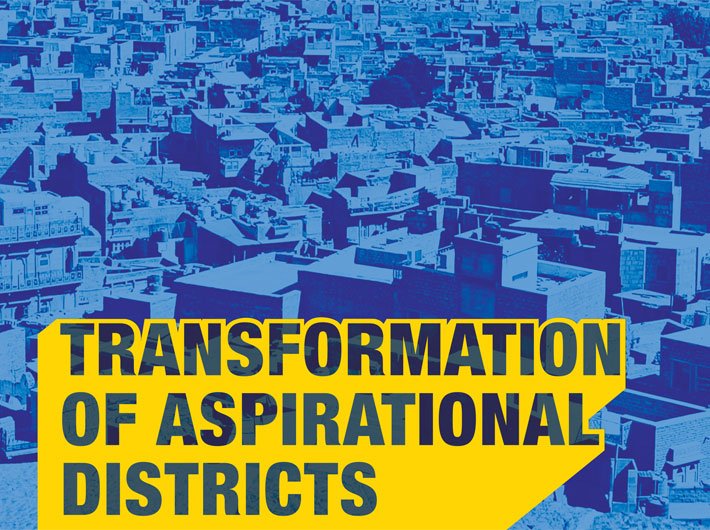‘Aspirational’ districts: Don't just improve a ‘development index’, raise the incomes of poor households
Finally there is a political target and a timetable for transforming 115 most backward districts by 2022, but does the NITI Aayog appreciate the unprecedented nature and scale of the effort?
The prime minister is stressing effective implementation through elected representatives, officials sent from Delhi and young IAS officers. The NITI Aayog is emphasising measurement, tweaking schemes and competition. Without clearly defining the objective, the effort will not produce outcomes different to the previous failed efforts for removing ‘backwardness’.
These districts have remained “backward” because of poor connectivity and education, lack of reliable power, absence of banking, gaps in appropriate science and technology for the difficult climatic conditions and dependence on forests; weak administrative systems are only one factor.
Most of these districts have a large number of the “poor” because their dispersed households are largely landless, tribal and dalit and have remained outside the ambit of sectoral programmes, institutions and market economy largely because the budget merely extended schemes designed for very different conditions.
That is why the top-down arrangements of the Backward Region Grant Fund, over a 10-year period (2007-17), were unsuccessful; its objective was redressal of regional imbalance. The real need is to consider the “characteristics” of equity-oriented programmes and their effect on actors, activities and actions.
New institutional model
The focus should be on poor households and the interface of village-level implementers with the rural poor for linking them with new arrangements, based on shared goals. Infrastructure projects like roads, electrification, drinking water and housing require primarily the provision of resources, technical efficiency and standardisation through design. Welfare projects like education, health and nutrition require primarily an effective organisation for service delivery and standardisation of outputs. Their ‘visibility’ tends to cover problems of ensuring continued access to the service. Equity oriented programmes require a continuing role for village-level functionaries for sustenance of the activity.
A new institutional model is needed. First, the critical decision is selection of at least one individual from each poor household and choice of activity that will enable that person to cross the poverty line, to support the family later. Second, beneficiaries should be selected prior to the determination of the activity with engagement, responsiveness and simplification of procedures rather than adherence to prescribed technical recommendations and rules. Third, the motivation of the staff is more important than ability. Fourth, in monitoring results direct feedback is important with continuing stakeholder contact. The need is to assess the objective, the impact on poor households, or wellbeing.
The inhabitants of ‘aspirational’ districts are physically, socially and economically distinct with varying demographics, infrastructure, and land tenure and community rights. In most of these districts the poor continue to be deprived of substantial economic benefits under the Forest Rights Act and District Mineral Foundations, conservation of monsoon run-off is more important than canals; teachers should be locals relying on technology and district administrators must spend most of their time touring.
Catalytic role of the centre
The initiative should be designed as a part of ‘cooperative federalism’, with prabharis from the central government as facilitators. For example, expediting implementation of central schemes, like fibre-optic laying-out and broadband connectivity; reviewing functioning of banks in providing loans for small-scale economic activities like shops and taxis; pulling in central research institutions to provide a solid technical back-up to agricultural productivity; and, assessing implementation of central legislation with a social impact and recommending amendments to rules.
Technology will be the game-changer, moving from the earlier focus on access to outcomes through the network effect of Aadhaar-enabled services, India Post-led banking, Jan-Dhan, Kisan and Swasthya Bima, Ujwala Yojana and Eklavya schools. This is an opportunity to develop big data analytics to support the poor and serve as a model for the rest of the country.
Generating employment through linkages with the private sector, for example, the growing market for herbal products and handicrafts, should be a top priority.
Human resources will be critical. Conditions in these districts are arduous, and just as the armed forces are paid hardship allowance, a part of central funds should go towards an equivalent allowance to all field staff over the next five years. Outstanding district officers and other officers opting for a five-year posting should be considered for the Padma Shri.
Indispensable state partnership
The states of West Bengal, Odisha and Kerala which are hesitant in participating will see an advantage once the focus shifts from reviewing sectoral programmes largely implemented by the state government to resource generation, technology adoption, and poor households and staff motivation, bringing together the indispensable PM-CM-DM linkage for effective implementation.
Then, under broad guidelines, central funds can be allotted to districts and states which are encouraged to do the same. The missing link in this chain has been district budgeting.
Sanwal is a former civil servant.

